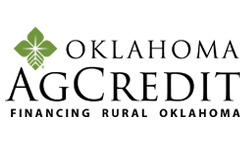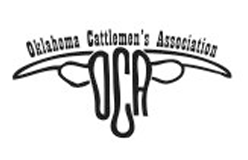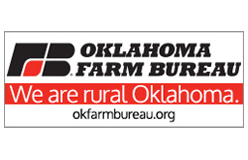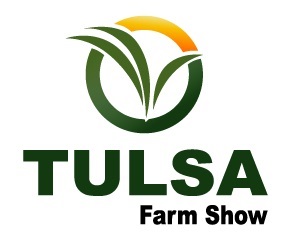
As we all consider current cow herd dynamics and market trends, producers are evaluating options to rebuild or expand, making this a timely moment to revisit selection priorities. Thoughtful replacement heifer selection is essential to shaping the future of a cowherd. Heifers that fit the production environment, breed early, calve unassisted, and remain productive for years contribute significantly to long-term profitability. This article outlines key traits and tools to consider when making those selections.
Growth Rate to Achieve Early Puberty and Reproductive Readiness
Heifers that reach puberty early are more likely to conceive during their first breeding season and calve by 24 months of age. Early puberty is moderately to highly heritable and positively correlated with lifetime reproductive success. To support this, heifers should demonstrate consistent growth and reach target weights that promote reproductive readiness. Ideally, they should weigh approximately 65% of their projected mature weight at the start of the breeding season (typically between 13 and 15 months of age). For example, a heifer expected to mature at 1,400 pounds should weigh around 910 pounds at breeding. Reproductive tract scoring, conducted 4 to 6 weeks prior to the breeding season, is a valuable tool for assessing reproductive maturity. Selecting heifers that exhibit early reproductive development lays the foundation for a more fertile, efficient, and productive cowherd.
Fertility and Longevity
Although fertility has low heritability, it is one of the most economically important traits in beef production. Aim for a 60% first-service pregnancy rate and 90% pregnancy rate within a 60-day breeding season. Early pregnancy diagnosis allows for timely culling of open heifers, which can be marketed as yearlings. Over time, this strategy enhances herd fertility and longevity, as early-calving heifers tend to remain in the herd longer and wean more pounds of calf over their lifetime. Maintaining a buffer of 5–10% more heifers than needed allows producers to cull sub-fertile individuals without compromising replacement numbers.
Milking Ability and Mammary Development
Optimal milk production is closely tied to forage availability and overall nutritional management. While milking ability is low in heritability, selecting sires with appropriate Milk EPDs can help target the right level of production. Avoid selecting heifers that were overly fat at weaning, as excessive fat can impair mammary development and future milk yield. When possible, evaluate the udder and teat structure of the dam to anticipate future performance.
Body Type, Disposition, and Structural Soundness
Phenotypic evaluation remains a cornerstone of replacement heifer selection. Avoid extremes in size, as both overly large and small heifers may present challenges in feed efficiency, calving ease, and longevity. Body type and fleshing ability are also important indicators of future productivity. Heifers with adequate rib shape, depth of body, and muscling tend to maintain body condition more effectively, especially under variable nutritional conditions. Disposition is moderately to highly heritable and plays a significant role in herd management. Calm, manageable heifers improve safety, reduce stress during handling, and often show improved reproductive performance. Culling heifers with poor temperament enhances the working environment and herd efficiency. Structural soundness, particularly in feet, legs, and eyes, is vital for long-term productivity. Heifers should be evaluated for mobility, hoof integrity, and leg structure to ensure they can thrive in various terrain and withstand the physical demands of breeding, calving, and raising a calf.
Calving Ease and Pelvic Measurements
Pelvic area (PA) measurements can help predict calving ease. A general rule of thumb is dividing PA by 2.1 to estimate the maximum calf weight a heifer can deliver unassisted. For example, a PA of 175 cm² suggests a heifer can calve an 83 lb calf. Additionally, consider Calving Ease Maternal (CEM) EPDs when selecting sires for virgin heifers. Bulls with higher CEM values produce daughters more likely to calve unassisted. Selecting bulls with low Birth Weight (BW) and high Calving Ease Direct EPDs is also critical.
Genomics in Heifer Selection
Advancements in DNA testing have added a powerful layer to heifer selection. Genomic-enhanced EPDs combine pedigree, performance, and DNA data to improve prediction accuracy, especially for traits like fertility, longevity, and maternal ability. Genomic tools are especially useful in commercial herds where data may be limited. Several companies offer affordable DNA testing services that help rank heifers based on genetic potential. These tests provide deep insight at a relatively low cost, helping producers increase confidence in selection decisions, identify heifers with superior genetics, and avoid investing in underperforming animals. Incorporating genomics into your selection strategy supports long-term herd productivity and profitability.
Final Thoughts
Selecting the oldest heifers, those born early in the calving season, remains a reliable strategy for identifying replacements with strong maternal backgrounds. Heifers should reach 65% of their mature weight by breeding and be culled if open after the first season. Investing in sound selection practices, including genomic tools, sets the stage for a more productive and profitable cowherd.
References:
https://www.iowabeefcenter.org/bch/ReplacementHeiferSelection.pdf
https://www.angus.org/Nce/SireEvaluation
https://jasbsci.biomedcentral.com/articles

















